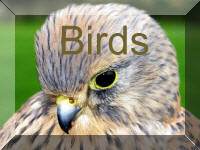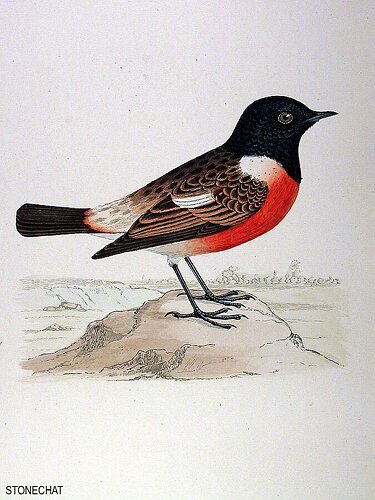Back To


Back To



What Does The Stonechat look Like ?
Stonechats robin sized birds similar to the Whinchat. . Males have black heads white sides on their neck, orange-red breasts and a mottled black brown back. Females lack the male’s black head, but have brown backs and an rusty orange tinge to their chests.Wing Flicking is a trait often seen while perched, often doing so on the tops of low bushes. Birds utter a sharp loud call that sound like two stones being tapped together.. Whinchats are similar , Stonechats having fatter bodies, shorter wings and longer tails , crucially have no eyestripe to break up the darker head. . It is an Amber List species
How Big Is It ?
Aprox 13 cm weighing 15 g
Where does it live?
Moorland, Heaths of Juniper, embankments and sandpits.
Breeding
Stonechats nest on the ground (occasionally higher) in vegetation or under gorse bushes on lowland heaths, gorse rich coastal sites or new conifer plantations.
Wintering
Similar habitats to those used in the breeding seasonWhen does it Breed ?
April to July , 5 - 6 eggs, Incubation 14 days , young fledging at 12 to 16 days, . Double brooded ./Nests on the ground
Where to observe it ?
Heaths, conifer plantations or coastal sites, especially in southern and western counties.
A common resident bird, although local in east and central England, favouring heath and moorland. In winter birds disperse, often to coastal areas. Siberian Stonechats (of the race S.t.maura) are annual vagrants, mainly in the autumn on the east coast.Breeds and winters in heathland and sometimes moorland, especially gorse-covered heaths by the coast.
What is its diet ?
Invertebrates, seeds and fruit (eg blackberries)
What does it sound like?
Hard 'tacc tacc' or 'hwee-tacc' calls; warbling dunnock-like song.
When to see it
All year round
Similar speciesWhinchat